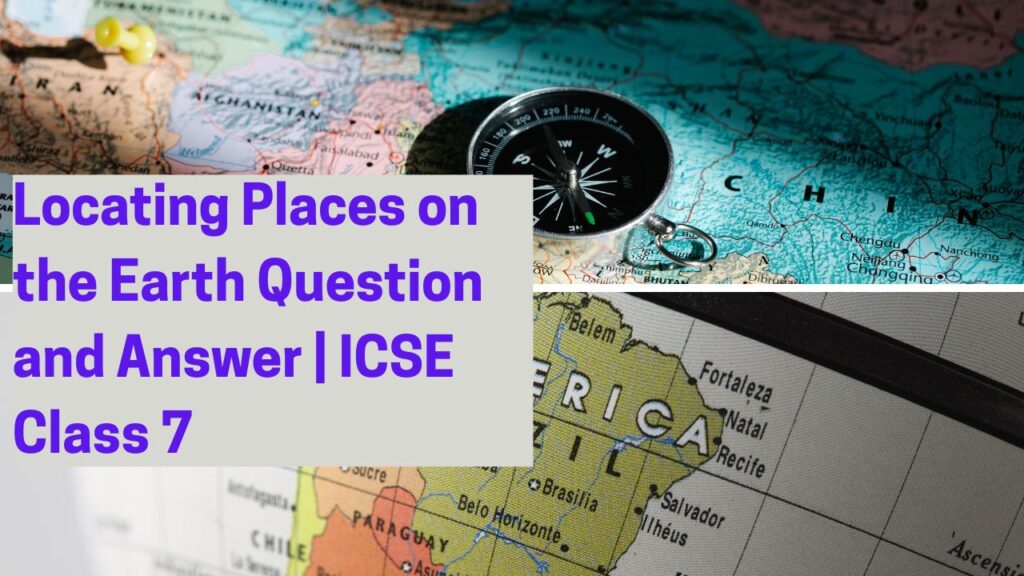Understanding the Study of Weather ICSE Class 7 chapter is essential for building a strong foundation in Geography. This chapter explains how weather is observed, measured, and recorded. Students will learn about key weather elements like temperature, wind, rainfall, and atmospheric pressure. In this guide, we simplify the concepts and provide clear explanations to help Class 7 students score well and understand the subject better.
A. Tick the correct answers:
1: Which of the following instruments is used to measure temperature?
Thermometer, Anemometer, Barometer, Rain Gauge
Ans: Thermometer
2: —- is used to measure humidity.
Anemometer, Barometer, Hygrometer, Thermometer
Ans: Hygrometer
3: Which of the following is not a form of precipitation?
Rain, Hailstones, Snow, Water Vapour
Ans: Water Vapour
4: The anemometer is used to measure the —- of wind.
Speed, Direction, Volume, Flow
Ans: Speed
5: Which of the following does not give daily weather information?
Newspaper, Magazine, Television, Radio
Ans: Magazine
B. Fill in the blanks:
1: A weather station is the place where weather conditions are recorded.
2: The boiling point of water on the Fahrenheit scale is 212 degrees Fahrenheit.
3: The automatic barometer is called a Barograph.
4: Other than km, wind speed is also measured in miles per hour.
5: The data collected on the different elements of weather help to forecast weather.
C. Give reasons for the following:
1: Weather is a continuous phenomenon, but climate is not.
Ans: Weather changes frequently and is observed on a daily basis, whereas climate is the average weather condition over a long period, usually 30 years or more. Thus, weather is continuous and fluctuates, while climate remains relatively stable over time.
2: The Six’s thermometer is kept inside the Stevenson screen.
Ans: The Six’s thermometer, which measures maximum and minimum temperatures, is placed inside a Stevenson screen to protect it from direct sunlight and precipitation, ensuring accurate temperature readings.
Look at the essay on Storybook My Dream Business Essay- 5 Checklist and 4 things determine the type of Business
Also, look for the Study Guide of Major Landforms and Waterbodies of the Earth
D. Answer the following questions:
1: Distinguish between weather and climate.
Weather:
- Weather refers to short-term atmospheric conditions such as temperature, humidity, and rainfall.
- It changes frequently, sometimes within hours or days.
- It is localized and differs from one place to another.
Climate:
- Climate refers to the long-term average of weather conditions in a region.
- It remains relatively stable over decades.
- It is classified into different climatic zones like tropical, temperate, and polar.
2: How is the Fahrenheit scale different from the Celsius scale? Which of the two scales is used to measure temperature in India?
Ans:
- The Fahrenheit scale has a boiling point of 212°F and a freezing point of 32°F.
- The Celsius scale has a boiling point of 100°C and a freezing point of 0°C.
- In India, the Celsius scale is commonly used for measuring temperature.
3: Name the unit used to measure atmospheric pressure. What is the average atmospheric pressure at sea level?
Ans:
- The unit used to measure atmospheric pressure is millibar (mb) or hectopascal (hPa).
- The average atmospheric pressure at sea level is 1013.25 mb (or hPa).
4: What is relative humidity?
Ans:
- Relative humidity is the amount of moisture present in the air compared to the maximum amount it can hold at a given temperature, expressed as a percentage.
5: Define wind. How is it named?
Ans:
- Wind is the movement of air from a high-pressure area to a low-pressure area.
- Winds are named based on the direction from which they originate. For example, a wind blowing from the east is called an easterly wind.
6: What are weather maps? How are they useful?
Ans:
- Weather maps are graphical representations of atmospheric conditions over a specific area at a particular time.
- They show temperature, pressure, wind patterns, precipitation, and other weather elements.
- Weather maps are useful for forecasting weather, tracking storms, and understanding climatic conditions in different regions.


